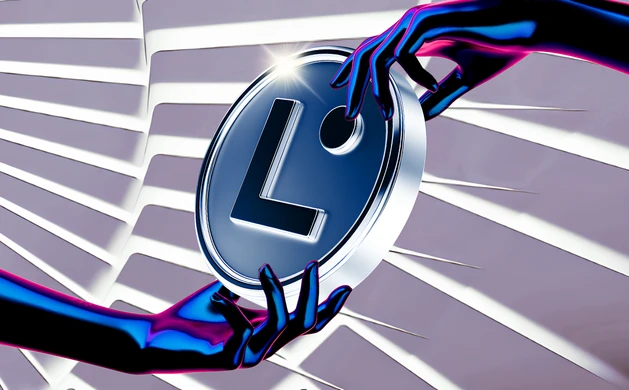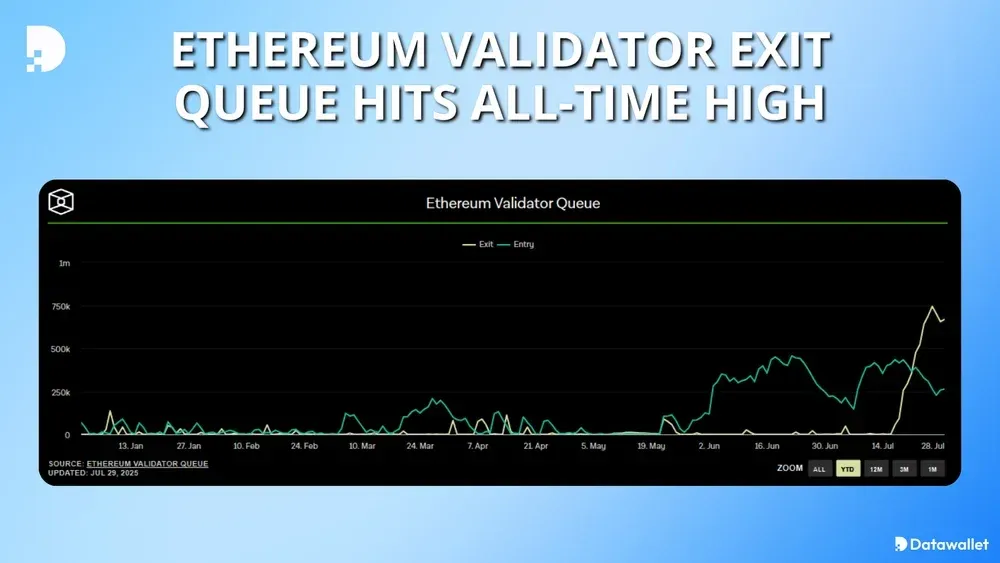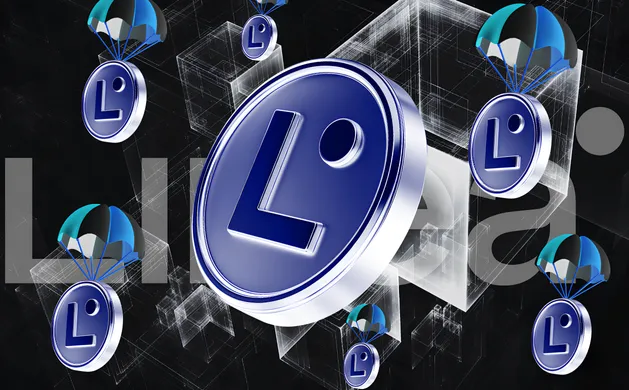Ethereum L2 Linea Unveils LINEA Token Airdrop Plans

GM. Ethereum Layer 2 Linea has disclosed plans for its LINEA token, with 85% going to builders and users, plus a deflationary model that burns both ETH and LINEA to generate long-term value.
Meanwhile, Hyperliquid faced a brief front-end outage, Senator Lummis backs crypto for mortgage reserves, and eToro will offer tokenized US equities and futures on Ethereum.
New tokens, new rails, and new rules are shaping the week. 👇
Ethereum L2 Linea Unveils LINEA Token Airdrop Plans
Ethereum Layer 2 network Linea announced plans to launch its native LINEA token later this year, with 85% allocated toward ecosystem participants, developers, and liquidity providers. An Ethereum-aligned consortium, featuring Consensys, SharpLink Gaming, Eigen Labs, ENS Labs, and Status, will manage the distribution.
Linea, built by Consensys, intends to attract capital by uniquely burning ETH directly at the protocol level (20% of all net transaction fees) and by creating native yield for bridged ETH. The remaining 80% of transaction fees will burn LINEA tokens, making the new asset deflationary and directly linked to network activity.
SharpLink co-CEO Joseph Chalom stressed Linea’s distinctive integration with Ethereum, highlighting its role as a strategic hub for ETH capital in DeFi. Ethereum co-founder Joseph Lubin echoed this vision, positioning Linea as critical infrastructure in Ethereum's emerging global financial architecture.
Linea currently controls roughly 1.23% of the Layer 2 rollup market, managing about $513 million in onchain assets. A staking mechanism launching by October seeks to increase its market presence by offering incentives for ETH liquidity, leading to higher network utilization.
Hyperliquid Token Drops Amid Short-Lived Service Outage
Hyperliquid users reported failed trades after order execution issues briefly disrupted the decentralized exchange’s service. Community members flagged API errors and pricing divergence, as ETH briefly traded $9 off-market before systems recovered. HYPE, the protocol’s native token, dropped 3.75% during the incident but later rebounded as frontends resumed normal operation.
BasedApp, a trading platform built on Hyperliquid, confirmed the disruption impacted order flow but said services were back online. Hyperliquid operates on its own Layer 1 network, HyperEVM, which powers its onchain order book. While the cause of the outage remains unknown, the team has stated it is actively investigating the issue.
Senator Lummis Backs Bill to Include Crypto in Mortgages
US Senator Cynthia Lummis introduced a bill to allow crypto holdings to count toward borrower reserves in mortgage underwriting. The legislation supports an ongoing initiative by the FHFA, which directed Fannie Mae and Freddie Mac to explore digital asset inclusion. Lummis said the bill targets younger, crypto-holding Americans who face barriers to homeownership.
The measure would let verified custodial crypto assets be counted without requiring conversion to dollars. Critics, including Senator Elizabeth Warren, argue it could destabilize the housing market by exposing loans to asset volatility. Lummis leads the Senate’s crypto subcommittee and has long advocated for regulatory clarity and integration across financial infrastructure.
eToro to Launch Tokenized US Equities and Futures
eToro announced a new offering to trade tokenized US stocks, ETFs, and futures on the Ethereum blockchain. The platform will allow global users to trade digital assets tied to traditional equities around the clock using ERC-20 tokens. CEO Yoni Assia cited US and EU regulatory milestones as clearing the path for these tokenized products.
The rollout includes a collaboration with CME Group to support tokenized futures and expands eToro’s reach beyond crypto. While US regulators are still defining treatment for tokenized assets, eToro joins firms like Robinhood and Kraken in pushing for mainstream adoption. Citadel Securities recently urged the SEC to regulate tokenized stocks without exemptions or new classifications.
Data of the Day
Ethereum’s validator exit queue hit a record 744,000 validators following a liquidity shock tied to Aave borrow rates. A sudden withdrawal of $630 million in ETH from Aave pushed rates up, making leverage loops unprofitable and forcing liquidations. Large holders redeemed ETH via validator exits, crowding the network and widening stETH discounts.
Arbitrage traders joined the exit queue to capitalize on price dislocations between stETH and ETH, intensifying congestion. Analysts expect queue pressure to ease as borrowing rates normalize and redemptions clear. Additionally, EigenLayer reopened deposit caps, prompting many operators to rotate funds out of Lido and into restaking protocols, driving validator exits even higher.

More Breaking News
- Tether will transfer 5,800 Bitcoin to Twenty One ahead of its public listing, bringing its Bitcoin treasury above 43,500 coins.
- CryptoPunks’ floor price has surged past $200,000 for the first time in over a year, triggered by ETH’s rise and renewed NFT market activity.
- 180 Life Sciences plans to rebrand as ETHZilla after securing $425 million to launch an Ethereum treasury strategy focused on DeFi-native yield generation.
- Arizona resident Vincent Mazzotta pleaded guilty to laundering $13 million through a fake AI trading Ponzi scheme and crypto recovery scam, facing 15 years.
- BitMine has launched a $1 billion stock buyback after its ETH holdings hit 625,000, reinforcing its goal to control 5% of Ethereum supply.
- SharpLink Gaming increased its ETH holdings to 438,190 tokens, now worth $1.68 billion, while continuing aggressive treasury accumulation through share sales and staking.
- ECB adviser Jürgen Schaaf warned Europe risks reinforcing US dollar dominance unless it accelerates efforts on euro-based stablecoins and coordinated global regulation.
For the latest updates on digital asset markets, follow us on X @Datawalletcom.
.webp)
Written by
Jed Barker
Editor-in-Chief
Jed, a digital asset analyst since 2015, founded Datawallet to simplify crypto and decentralized finance. His background includes research roles in leading publications and a venture firm, reflecting his commitment to making complex financial concepts accessible.







